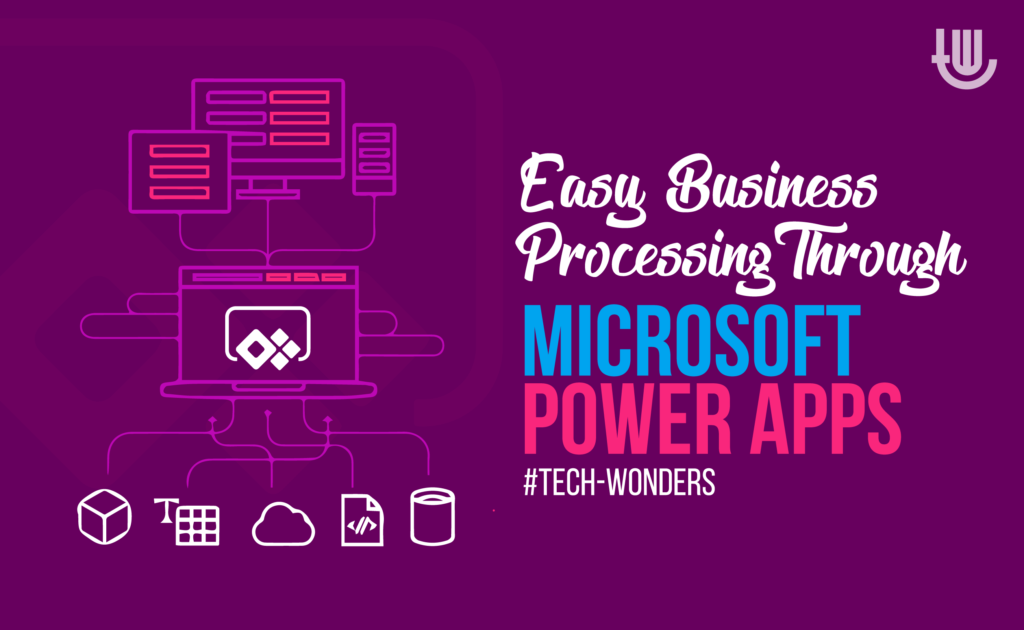
Businesses of all sizes and industries are quickly shifting to the cloud. Indeed, 6 in every 10 companies have deployed mobile and web-based applications to automate certain repetitive functions, according to a recent Tech Jury survey.
But, hold on. The journey to the cloud is not all a smooth ride. Creating customized apps that serve the unique needs of teams in various departments can be tedious.
In fact, your average business team in the IT department simply won’t cut it, unless, of course, you have the budget to hire professionals. Fortunately, Microsoft PowerApps is here to your rescue.
If you’re wondering what this is, and how it can help streamline processes in your business, then keep reading.
What Is Microsoft PowerApps?
Microsoft Power Apps is an AI-powered application builder that helps users create mobile and web-based forms and apps without much coding involved.
The Low-Code Application Platform (LCAP) contains a suite of connectors, services, apps, and a data platform. It enables anyone with knowledge in Office to develop their own custom applications within less time.
Apps created using the PowerApps platform can interact with data sources and services in the Microsoft 365 network. This makes it attractive to business, as developers can incorporate business intelligence dashboards and automation into apps.
Microsoft PowerApps helps transform the day-to-day operations of businesses in various ways. Here are the top 5 benefits of using Microsoft PowerApps to streamline business processes:
Employee Recruitment

The majority of employee recruitment processes require dedicated resources. HR managers can automate some of the onboarding processes using an application.
One of the powerful features of the Microsoft PowerApps is its seamless integration with the data from other Microsoft 365 applications like Outlook and calendars.
PowerApps allows businesses to build an onboarding application that provides many resources for new employees in one place. Using the onboarding application, new employees can complete their Office 365 profiles quickly and efficiently.
Upon setting up their internal profiles, the new joiners can access essential company resources such as links to policy guides, team member contact details, onboarding forms, etc. All these are made available on a single platform to ensure a faster, more secure onboarding.
Sales Intake
In some businesses, sales representatives are required to visit client sites and complete sales orders outside the office. Sales managers depend on these sales reps to submit daily sales reports through excel sheets.
However, scanning through sales reports on hundreds of excel sheets is boring and time-intensive. Besides, it’s easy to miss out on underlying insights.
Sales managers can utilize Microsoft PowerApps to build an app for sales reps to record their daily visits, total sales, and new orders. The app fuses with Microsoft Dynamics 365 Sales to enable users to extract and input sales data into the Dynamics 365 CRM, which has intuitive forms.
Sales managers will be able to access the consolidated sales information and track the performance of each sales rep with a single click. This allows for a streamlined sales process.
Expense Tracking

Most business owners know how important receipts are in case they’re audited. The problem with paper-based receipts is that they’re easy to lose.
Microsoft PowerApps lets you create a no-code expense tracker app that’s accessible anytime, on any device. You can upload paper-based expense forms into your expense tracker app for safekeeping.
You can also create an expense tracker app that does more than receipt tracking. You can reconcile accounts, monitor credit, create a budget and even send invoices.
Service Request
IT teams receive thousands of customer service requests every single day. Such requests include password resets, access to applications, software licenses, and more.
Service requests are often recurring, so efficient businesses use service request applications to handle them. PowerApps can help IT Support Managers build an interactive service request app for responding to and fulfilling requests.
Through the dedicated app, the customer can check available IT services, as well as submit help desk tickets and track the progress of their ticket.
In addition to service request apps, PowerApps can also help businesses build applications for collecting service requests for purchase orders, facility maintenance, and human resources among others.
Image Processing
In the era of deep learning and machine learning, image recognition has taken a new turn. Microsoft PowerApps allows businesses to build apps for image processing.
Image processing apps work in tandem with camera-enable devices to support image analysis in retail, construction, and healthcare. A mobile device’s camera captures photos of products and other items during inspections and performs certain operations to extract and store useful data for reference.
In medical analysis, developers can use PowerApps to create apps that capture body parts and analyze them to detect and identify diseases. It achieves very high accuracy, way higher than professional medical practitioners can achieve.
Additionally, image processing apps can be used in business to check information about an individual. The app takes a snapshot of the individual, sends the image to a back-end facial recognition process, and measures certain patterns around the object in the image to verify the identity.
Conclusion
Going into the future, the demand for apps will continue to rise as businesses seek new ways to automate and streamline processes. If you don’t have any business application just yet, it’s about time you tapped into the power of Microsoft PowerApps.
Microsoft PowerApps makes it easy to build more complex apps with little or no programming, so businesses can do more with fewer resources.